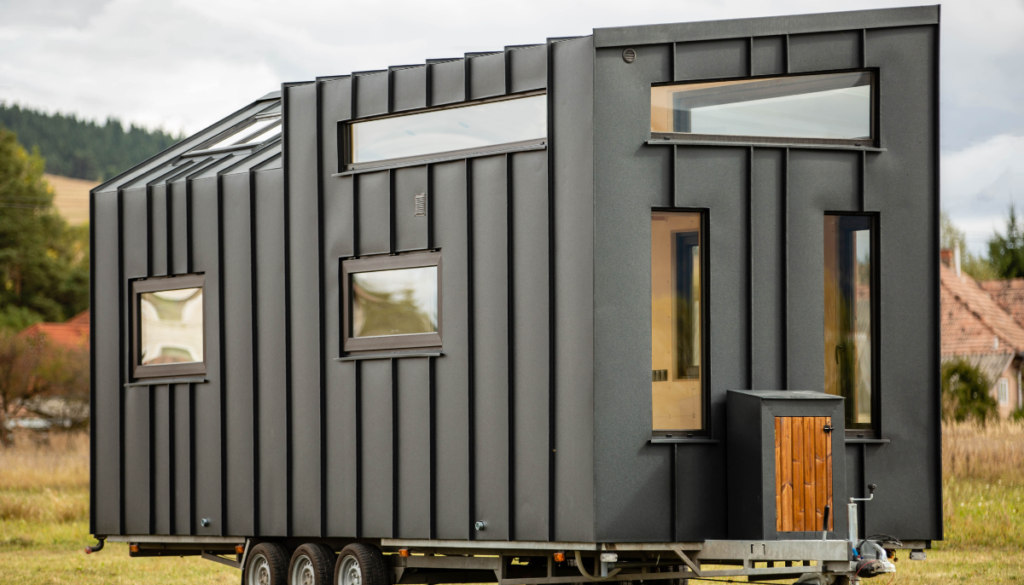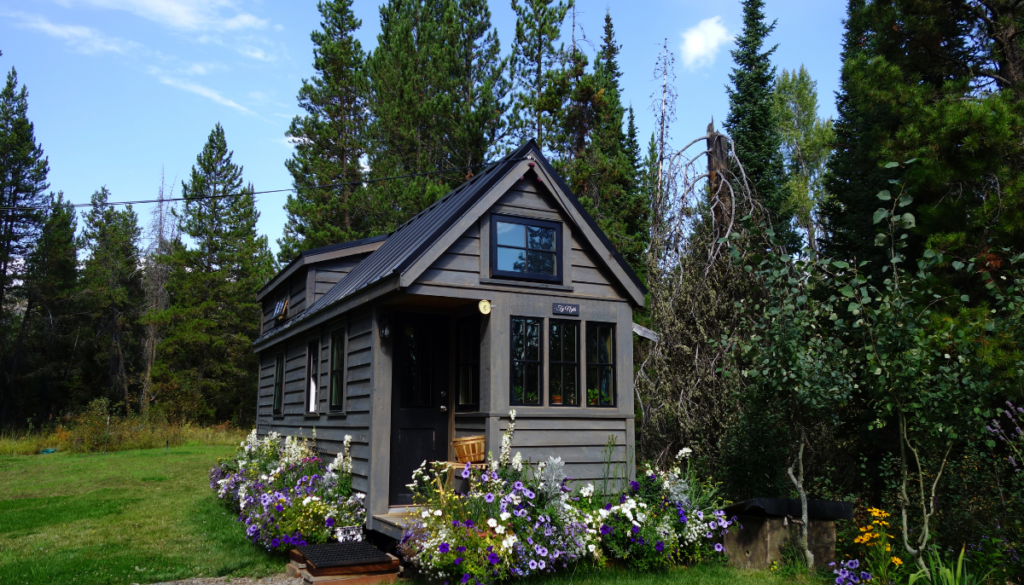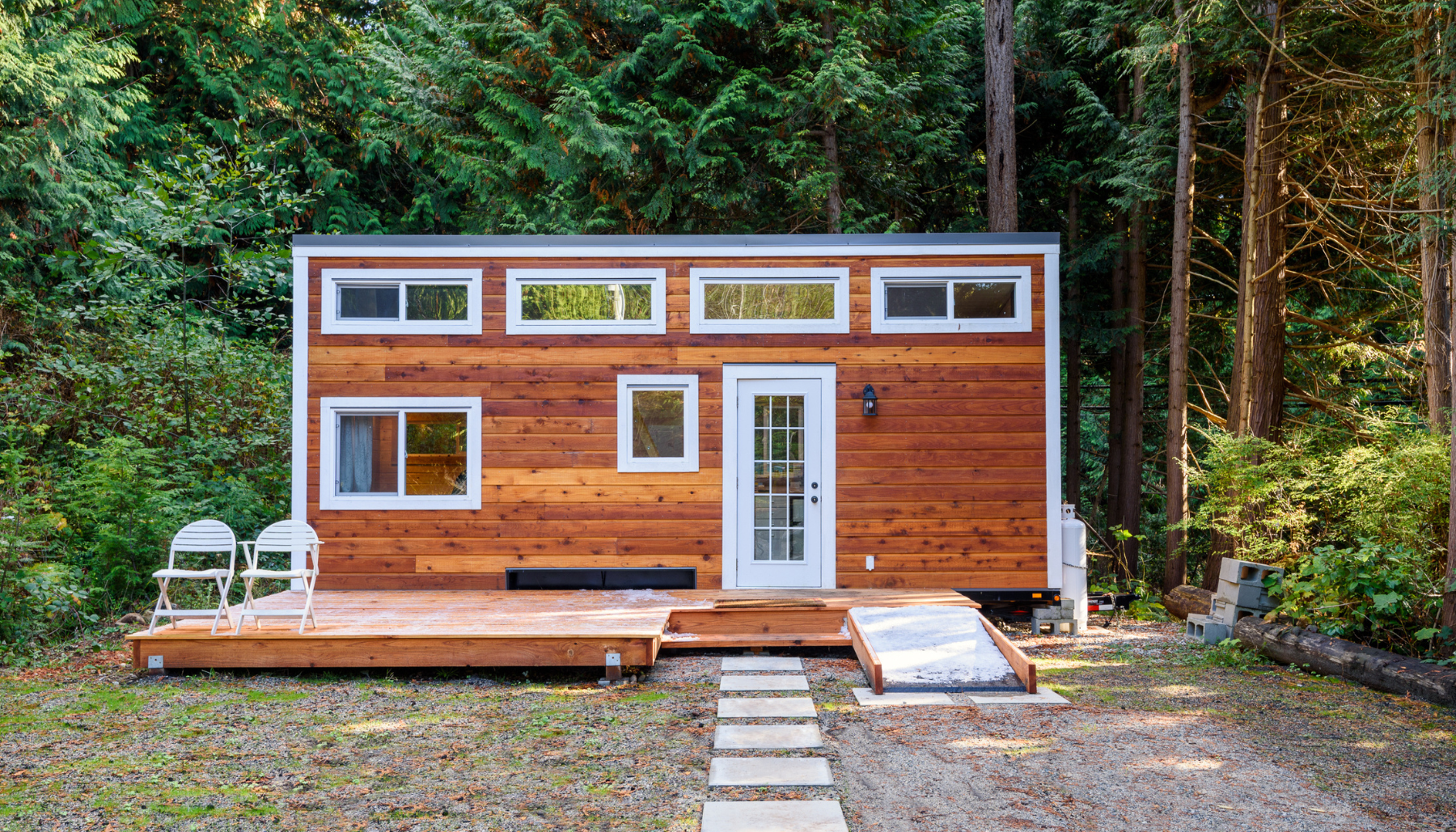I love the idea of living in a tiny home. Not only are they cute and trendy, but they’re also packed with clever storage and they can be eco-friendly.
Tiny homes are booming in popularity. Search “tiny house” on Instagram or YouTube and you’ll find so much incredible content, from photos of beautiful interiors to time-lapse videos documenting months of work that went into building one family’s tiny home. I could spend an entire week just watching tiny house videos, marveling at all the cool ways that people design and decorate their homes.
But there are drawbacks to living in a tiny home, too. Of course, the main disadvantage is the lack of space. There’s not a lot of room for a family to grow in a tiny house – but it can be done! However, tiny homes can present challenges in other areas, too.
Before you make a decision about whether to invest in a tiny home, take a look at what you should know to find out if the tiny home trend is right for you.
How Much Does a Tiny Home Cost?
You might be surprised by how inexpensive a tiny home can be. According to Certified Title Corporation, “Some kit-based houses cost less than $3,000, and even the more complex tiny homes with intricate designs generally run less than $100,000.
“At those prices, it’s not surprising that the vast majority of tiny home owners don’t require a mortgage. The reduced price means that insurance and taxes are significantly lower, as well.”
Lower insurance and taxes are two great incentives to buy a tiny house with a tiny footprint. But of course, you don’t have to build your tiny home from a kit.
Some tiny house owners have sourced materials that would otherwise be thrown away and used them in the construction of their homes, significantly decreasing their costs by getting materials for free or at a low price.

But you can also build your tiny home from all brand-new materials. If you have the budget, it could be a great option. Or you could choose a combination of repurposing old materials and using brand-new materials in your tiny home construction.
You’re not limited to building a traditional structure, either. Converting vans and old school buses into tiny homes has also become extremely popular, but they come with their own set of limitations.
Ultimately, the cost of a tiny home will depend on how much time you have to give to the project (the more you can do yourself, the cheaper it will be) and how much you want to spend.
What a Tiny Home Is…
Sure, van life and converted school buses are great options for some people, but a van or a school bus won’t necessarily feel like home to everyone. They still count as tiny homes, but they’re not necessarily tiny homes that are built to last.
Spend some time looking at tiny homes online and you’ll quickly find out that there are so many different types. There are inexpensive tiny homes made from materials taken from scrap piles, but there are also tiny homes built with high-quality finishes and featuring all the bells and whistles that cost nearly half a million dollars.
Tiny homes run the gamut, from carefully-patched together to expertly-designed builds. Many tiny homes are, like traditional homes, built from a combination of wood and metal. Turning an old shipping container (or two) into a tiny home has become extremely popular.
The law regarding tiny homes varies from place to place. In some countries, a tiny home has to be on wheels. In others, tiny homes can be built directly onto the land. Check out the regulations in the areas where you are thinking about building your tiny home before you start your construction plans.
And Where Tiny Homes Go

Just like how the law dictates exactly what constitutes a tiny home, the law also says where a tiny home can be situated.
Living in a tiny home is a great way to live closer to nature. Some people take the money that they would have spent purchasing (or building) a bigger home and use it to buy a large plot of land instead where they eventually set their tiny home. Many people who live in tiny homes on a large plot of land have outbuildings, like garden sheds and sometimes outhouses, on their property as well.
Others choose a tiny home out of financial necessity, which means there never was a big budget for land. They might find a plot of land to rent, or if they have generous friends or family, they might find an area on their property where they can hook up their tiny home for free.
In some areas, there are communities specifically dedicated to tiny homes. These communities typically have one large building where members can gather together and consist of roughly 30 tiny homes.
Read More: Tips for Making a Small Space Feel Bigger
Think about what would be best for your life situation – do you have relatives or friends who own land and might be open to sharing it with you? Are you flexible enough that you could live anywhere? Do you have the funding to purchase a plot and to build a tiny house?
Unfortunately, finding the right place to put your tiny home may be the hardest part of the process. According to the American Tiny Houses Association, “Too few legal places to live is the biggest problem in going tiny. It’s a source of difficulty and frustration for tiny house dwellers and lost financial opportunity for the businesses ready to serve them.”
Finding a place for your tiny home may be the most difficult part of the journey. Make sure you check local ordinances before you get too attached to a specific location for your tiny home.
Going Off the Grid

Location will determine so much about your tiny home. If you can park your tiny home in your parents’ semi-suburban backyard, it might make the most sense to simply hook up to the grid.
But many people choose to live in a tiny house because they don’t want the status quo. They’re looking for a way of life that’s better for the environment and that’s better for their bank account, too. It’s possible to feed water and power to your tiny home while being completely off the grid.
Water conservation is important to many tiny home owners. It’s common to set up rain barrels and gray water systems that provide water for the tiny home instead of connecting to the grid. Obviously, clean drinking water is a must, so if you’re interested in building a tiny home in a remote area, make sure you research water sources in the area before you get too attached to one specific location.
Plenty of tiny home owners choose to fit their bathrooms with composting toilets instead of regular flushing toilets that waste clean water. With a composting toilet, you scoop a material (like woodchips or sawdust) into the toilet and, whenever you need to, then dump the contents in your compost heap outside.
Water is critical all year round, but heat’s only an issue in the winter. Some tiny homes are completely heated by one compact and efficient wood-burning stove rather than an electric heater. The small size of a tiny home makes it easier (and therefore less expensive!) to heat.
Of course, you don’t have to go off the grid at all. If you’re planning on putting your tiny home where it’s easy and cost-effective to connect to city utilities, then that might be the right choice for you.
Another option is to draw some of your energy from the city services and some from your own land. For example, you might want to pipe your water in from the city, while at the same time you supply your own electricity via solar panels. Just like with choosing a location for your tiny home, when it comes to utilities, do your research before you get too attached to one idea!
Tiny Homes and Storage

No matter where you place your tiny home or how you get the utilities you need, you’re going to need to think seriously about storage. How you store your books, your out-of-season clothes, old sentimental mementos, etc., will all depend on your taste and the design of your home.
If you’re designing your tiny home from scratch, then you get to dictate exactly how and where you’ll build in storage. But don’t reinvent the wheel. Take a look at these common tiny home storage solutions that will help you maximize your space:
- narrow pull-out spice shelves
- clothes baskets instead of dressers
- under-sofa storage
- storage ottomans
- countertop that folds out into a kitchen table
- under the stairs (each step) storage
These are just a few ideas, but tiny home owners have come up with so many more. Check out Bryce Langston’s YouTube channel, Living Big in a Tiny House, for tons of videos showcasing amazing storage ideas.
Tiny Homes and Minimalism
While you can definitely maximize your storage options, a tiny home will compel you to focus on what’s most important in your life. If you live in a tiny home, you can’t hang on to old things that you might use or you might never touch again (a bad habit of mine). There’s simply not enough space. You’ll need to reduce what you’re hanging on to, which might bring you more happiness than you’d expect.
Do you think the tiny house trend is right for you?












